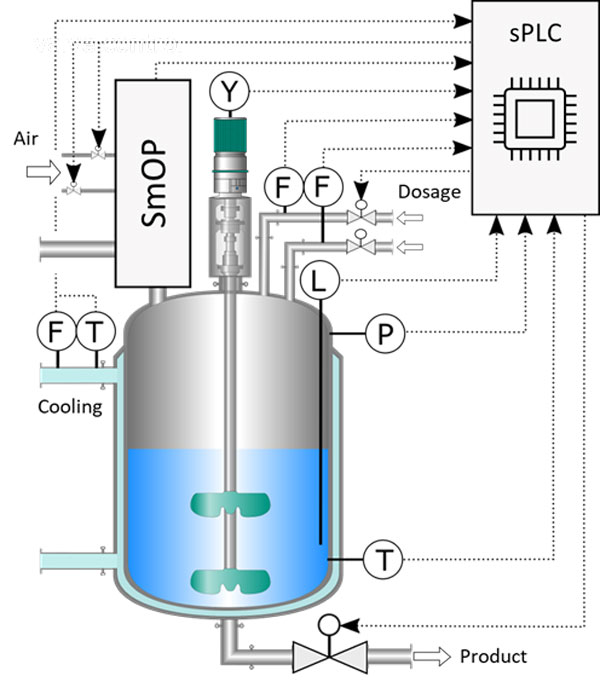Intelligent safeguarding of chemical reactors with adaptive safety devices.
dashboard Objectives
The goal of this research project is the development of an adaptive safety device, a “SmOP – Smart Overpressure Protection Device”, which adapts to the changing requirements of the operation and ensures its safety. The SmOP should be adaptable in set pressure and relief cross-section during the process and thus offer the greatest possible flexibility. The SmOP distinguishes between two operating modes: A zero-emission mode without pressure relief and a smart-relief mode with process-adaptive pressure relief. Faster reaction modes due to higher operating pressures are made possible, unstable valve behaviour (valve flutter) can be avoided, optimal discharge conditions for downstream system components can be realised and two-phase discharge can be prevented.
Smart safety devices – fiction so far, reality in the future! Smart safety devices can significantly increase the flexibility and productivity of multipurpose plants.
Figure: Smart Overpressure Protection Device in the system diagram.
dashboard MILESTONES
New method for online response tracking
Risk assessment based on the current hazard potential
Zero-emission / smart-relief mode for the protection of reactors
Application for various reaction types in the chem. Industry
dashboard Overview
Reactor simulation
Protection model
Online valve sizing
Safety-oriented programming
Miniplant experiments
dashboard Motivation
Mechanical safety devices such as safety valves and bursting discs provide sufficient protection against impermissible pressures even if a PCT control unit fails as a (component) tested fitting, which is why they are widely used in industry. If protection is provided by PCE safety devices alone, the filling level or concentration of the components must sometimes be greatly reduced, which is why the use of an additional mechanical safety device is recommended.
However, mechanical safety devices are specifically adapted in design to a particular process and reaction. Batch (BR) or semi-batch reactors (SBR) in particular, with constantly changing recipes and the associated changing safety requirements, present plant operators with enormous operational problems. Static relief cross-sections and set pressures also limit the productivity of the reactors – economic potential remains untapped. In an age in which 3D plant tours are possible, innovation is thus also needed in the safeguarding of chemical reactors. A Smart Overpressure Protection Device.
ashboard PUBLICATIONS
Schmidt, C., Schmidt, J. and Denecke, J.:
Smart overpressure protection devices to protect chemical reactors against exothermal runaway reactions. J. Loss Prev. Process Ind., vol. 82, 2023.
DOI: 10.1016/j.jlp.2023.104996.
Schmidt, C., Biernath, J., Schmidt, J., Denecke, J.:
Protection of Chemical Reactors Against Exothermal Runaway Reactions with Smart Overpressure Protection Devices. CHEMICAL ENGINEERING TRANSACTIONS VOL. 90, 2022, DOI: 10.3303/CET2290083.
Biernath, J., Schmidt, C., Schmidt, J., Denecke, J.:
Model-based zero emission safety concept for reactors with exothermal reactions for chemical plants. J. Loss Prev. Process Ind. 72, 2021, 104494.
DOI: 10.1016/j.jlp.2021.104494.
PROJEKT LEAD:
STAFF | CONTACT:
person Carsten Schmidt, M.Sc.
email Send email
phone +49 721 6699 4719
FOCUS AREAS:
More projects
EuroValve – European Program on Evaluation of Safety Valve Stability
Development of a new safety criterion for safety valves.
sRMC – Safety related Remote Process Monitoring & Control
Applying AI in acoustic-based sensor systems for gas leakage detection
RiIM – Risk-based Pipeline Integrity Management
Developing an AI-powered, risk-based pipeline integrity management system.
Cover photo source "Tube Geometry", RiIM project: Harald Hoyer from Schwerin, Germany, CC BY-SA 2.0, via Wikimedia Commons
Cover photo source "Winstainforth", SafeDDT project, CC BY-SA 3.0, via Wikimedia Commons




